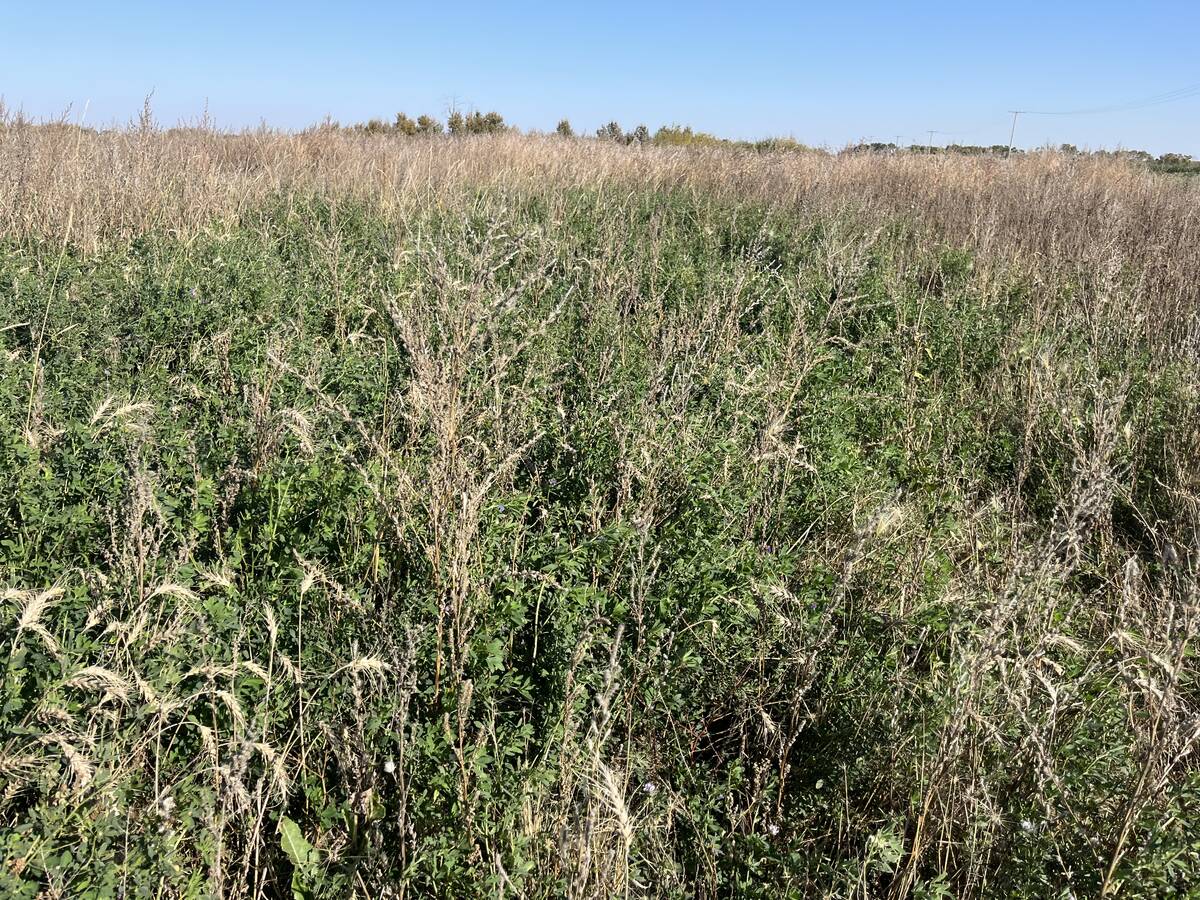DUFFIELD, Alta. – If rotational grazing is successful on a reclaimed coal mine with no topsoil, it can work anywhere, said the manager of reclamation for TransAlta, a power and utility company.
“Seeing this area proves to us rotational grazing on marginal reclaimed land can be a success,” said Gavin Miller.
“If rotational grazing is going to prove itself, this is where it is,” said Miller during a tour of the TransAlta Grazing Management project west of Edmonton.
When the land was reclaimed in the 1970s, there was no requirement to replace the topsoil. The land has only subsoil held down by a thin layer of creeping red fescue and Kentucky blue grass.
Read Also

Dormant seeding forages frees up farmer time and gets ahead of weeds
Dormant seeding isn’t common practice and can appear daunting, but there are some techniques to give Manitoba farmers an edge
After three years of trials that compared cattle grazing on a 50-acre block of pasture and cattle on land divided into eight paddocks, the difference is visible.
The amount of grass litter on the rotational grazing side is higher, more cattle can be grazed on the rotational grazing area, the cattle gained more weight over the season and the more favourable species of grasses have increased on the rotational grazing side.
“This pasture is 10 times better than what it was when we came,” said Arnold Mattson, range specialist with Agriculture Canada’s Prairie Farm Rehabilitation Administration and a partner in the project.
On the rotational grazing blocks, the amount of grass litter was 28 percent higher than on the continuously grazed area in only two years.
Litter helps absorb moisture and prevents rain from running off the pasture.
The average daily gain of the cattle on pasture is 37 percent higher on the rotationally grazed pasture and the total amount of beef production has increased with each year the pasture is grazed.
“You do see a difference on the cattle coming out of here,” said Kim Bamber, whose cattle grazed on the TransAlta Grazing project, as well as other TransAlta land.
After three years, he has seen the benefits of rotational grazing on his cattle and the pasture.
“It’s so visual here,” said Bamber, who said he only made halfhearted attempts to rotational graze his cattle before he was involved in the project.
Now he tries to implement rotational grazing on his other land.
Mattson said the project faced many challenges.
The main problem was no soil and poor grass. The pastures had been overgrazed for years and needed renewal, but everyone was reluctant to disturb the fragile pasture with cultivation.
A grazing plan had to be developed that would help more beneficial grass species return to the pasture by grazing management.
Cattle are selective grazers. By forcing them to eat the grass that’s not their first choice, the paddock is not overgrazed. During the season the cattle were moved every seven days. Now they are moved every three days to prevent overgrazing.
The area gets little rain. The project began in the fall of 2003 and 2004 during one of the worst droughts in the province’s history. There have been no soaker rains since the project began.
On the pasture project, pipes were dug underground to supply water to a solar watering system from a central well. Mattson said trenching in water lines is now considered a bad thing so he recommends laying pipes on top of the ground.
It cost $11,000 for the solar watering system, $370 a kilometre for the one-wire electric fence and $550 a km for the two-wire fence.
When the project began, Miller hoped local farmers and ranchers would visit it often to help launch rotational grazing on their own land.
But few area producers have shown interest in the project and he doesn’t know if it will continue.
“It’s tough to change old ways,” he said.














